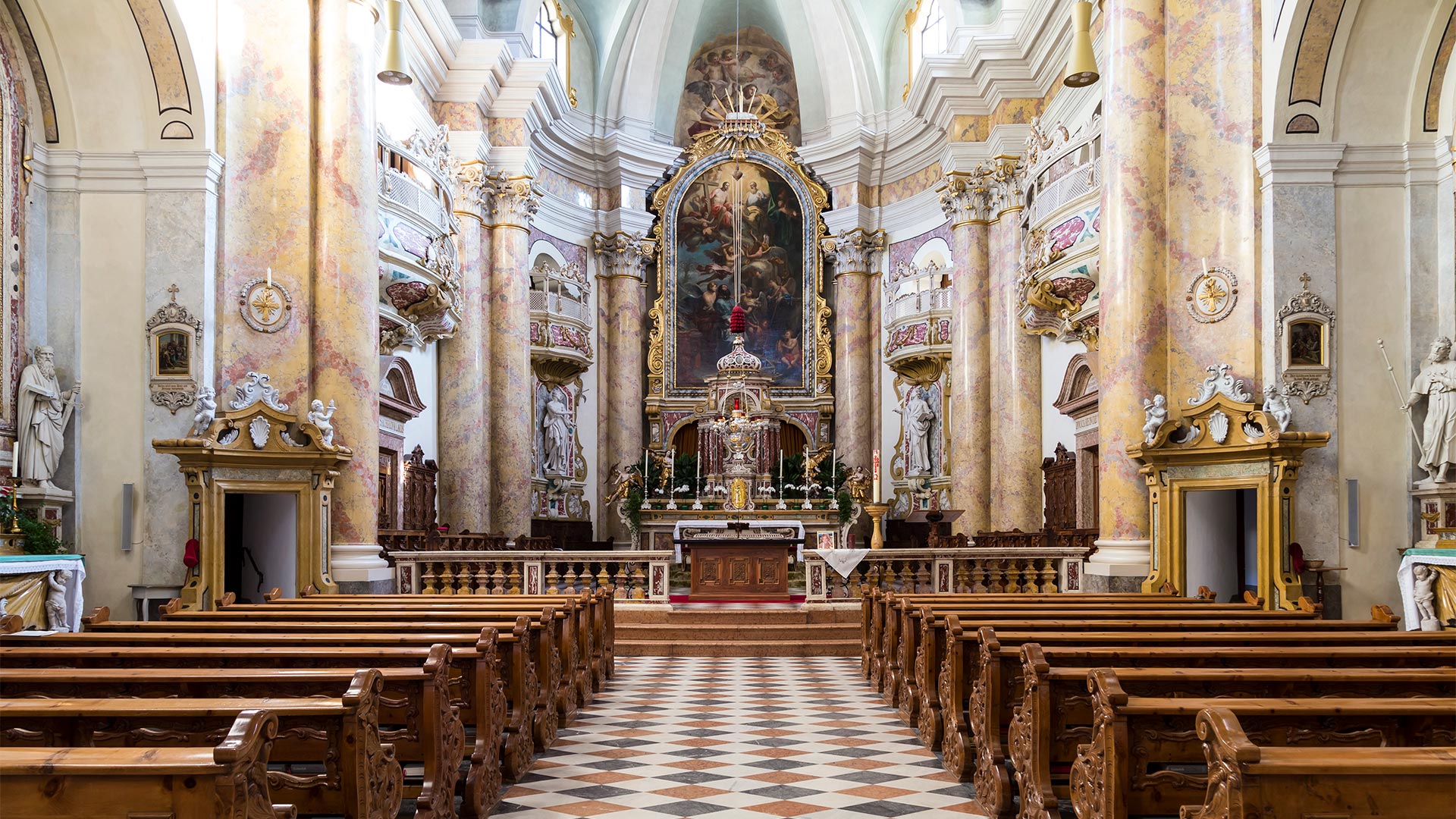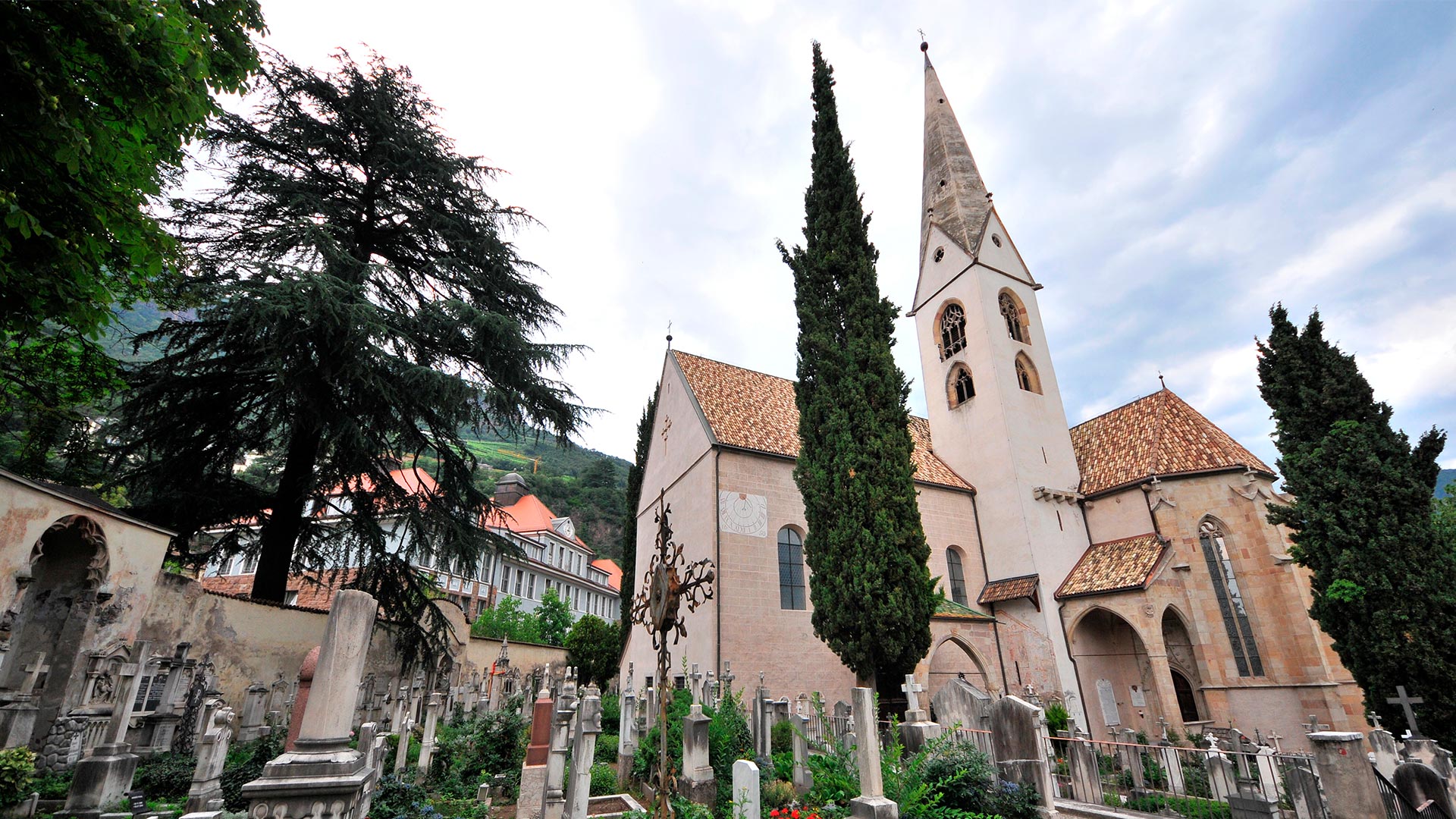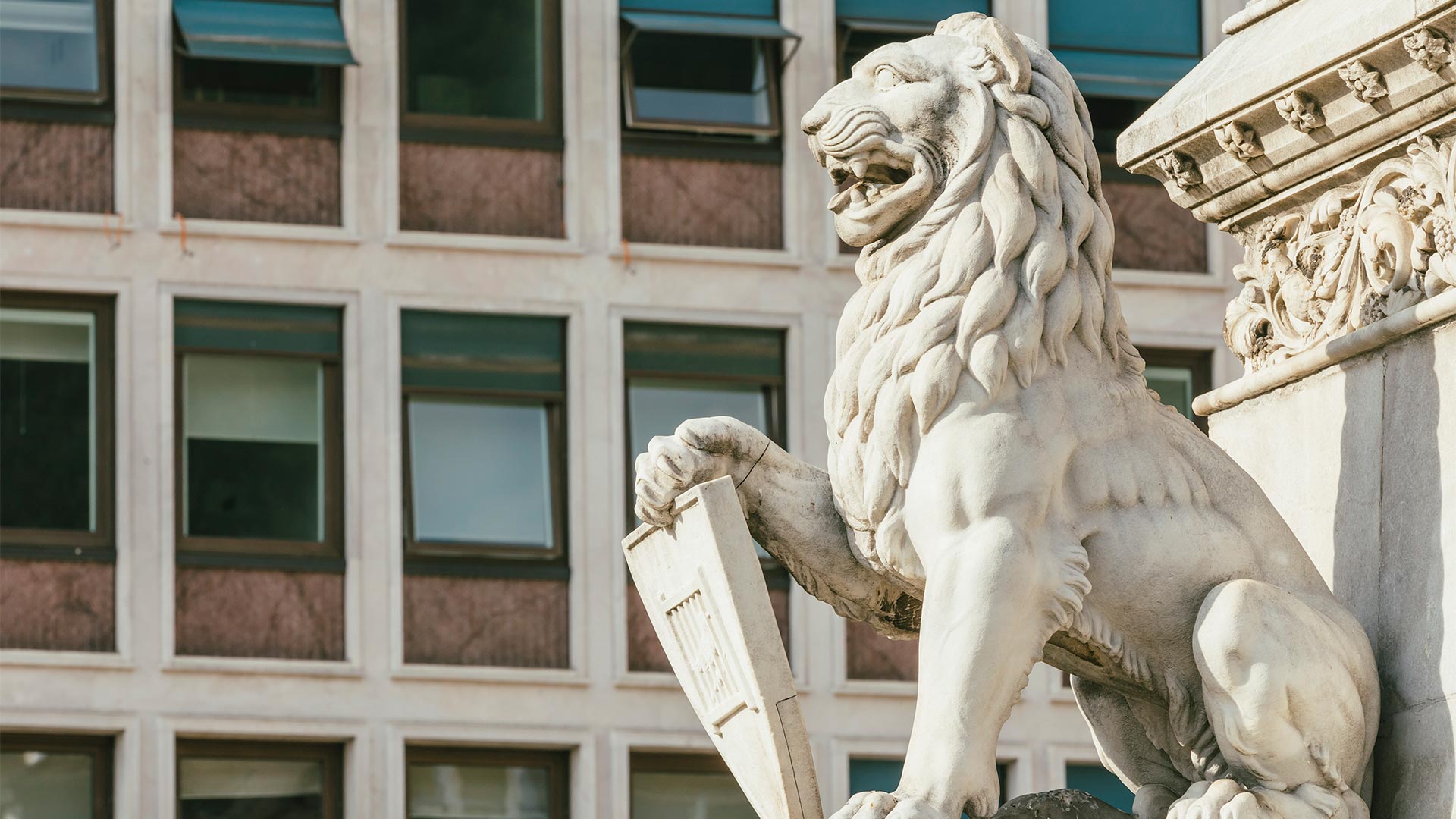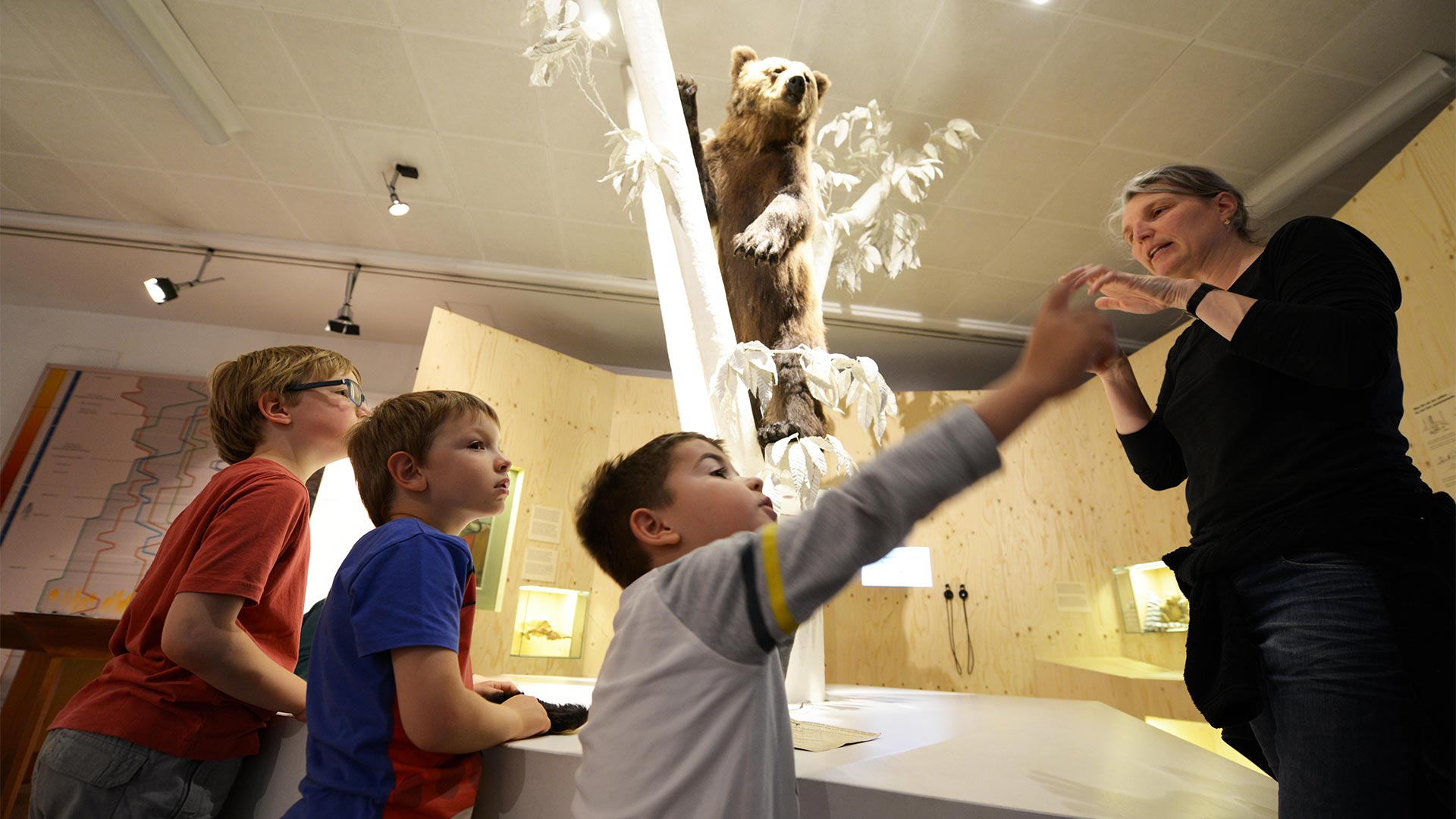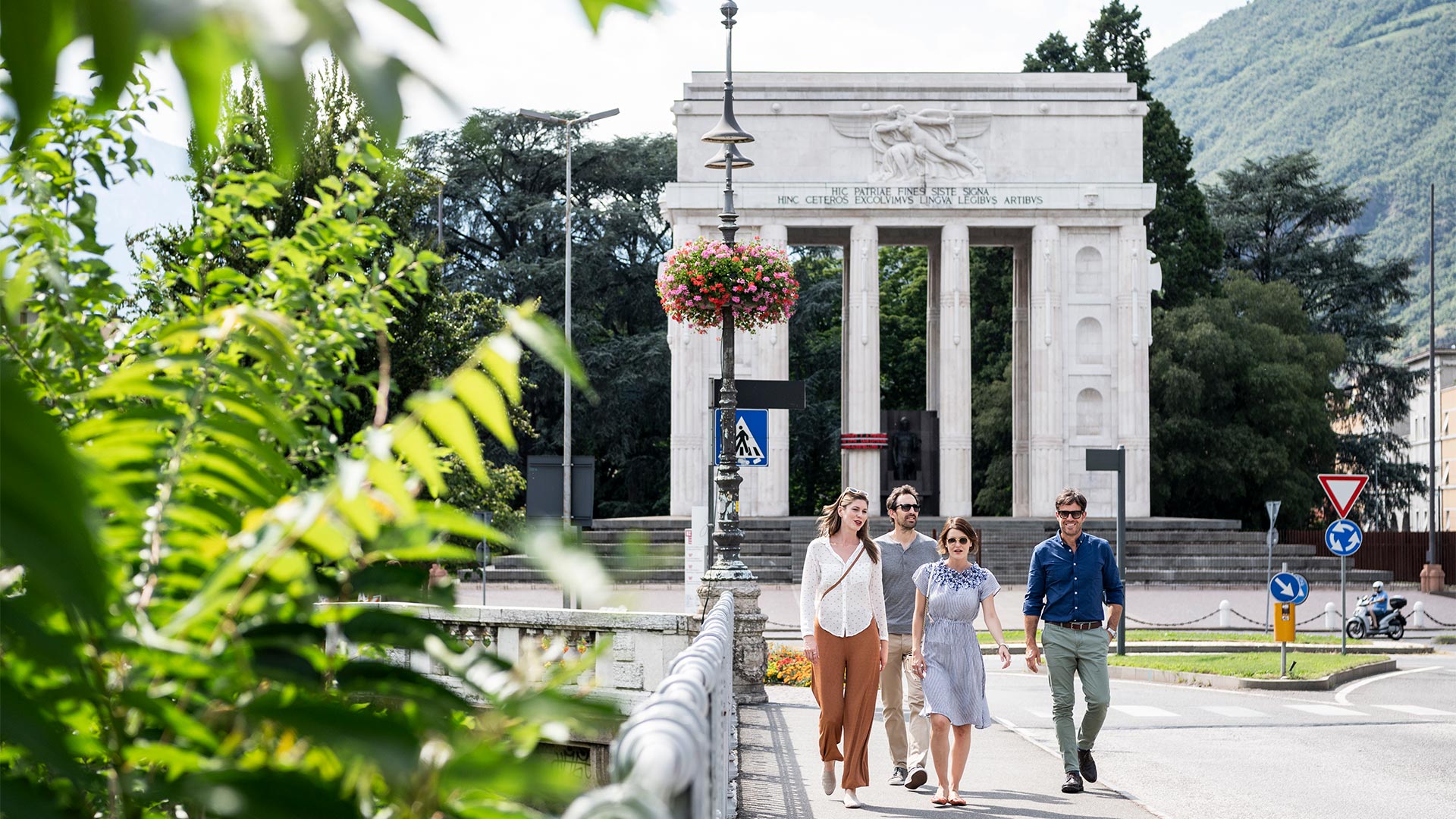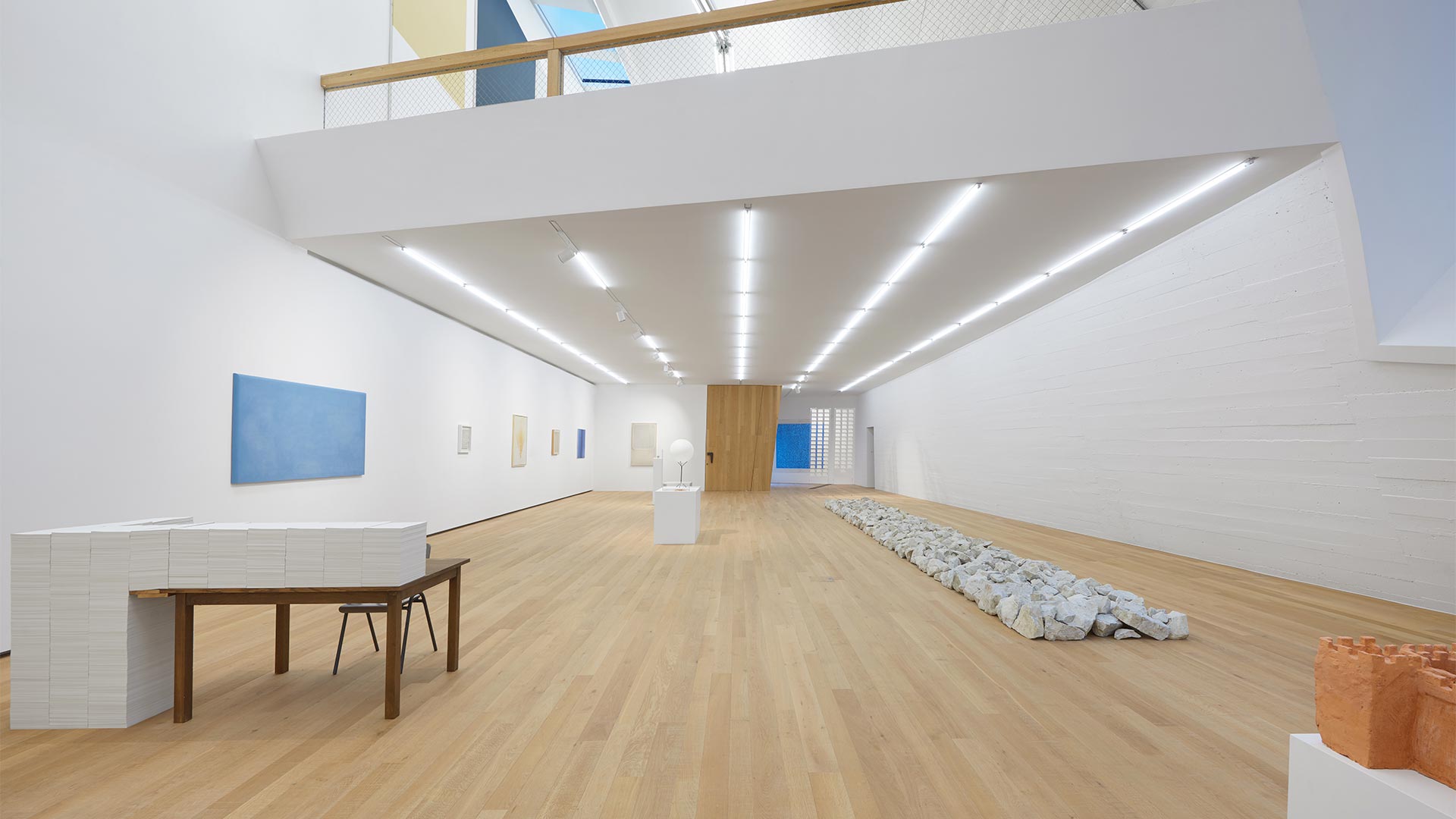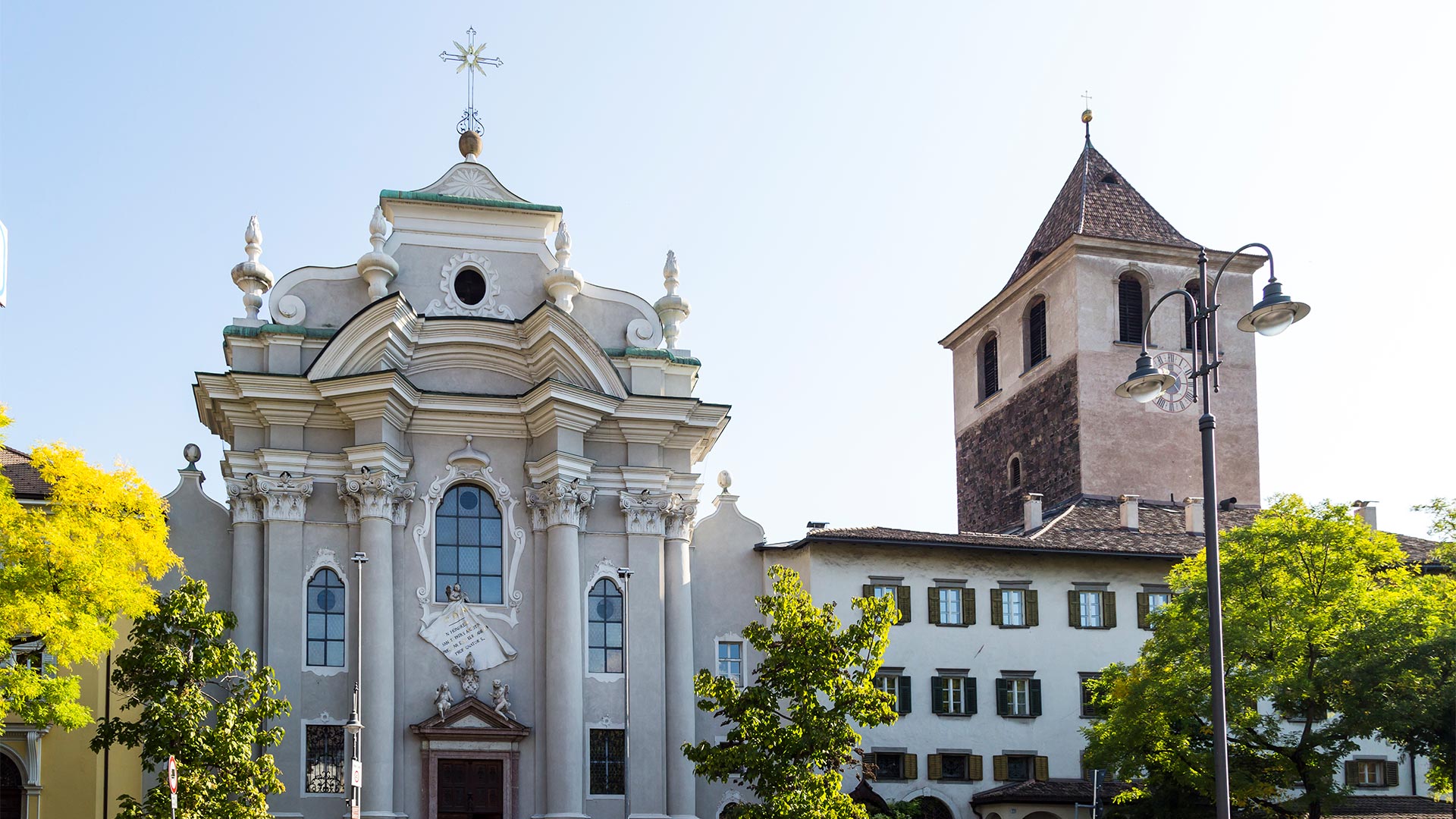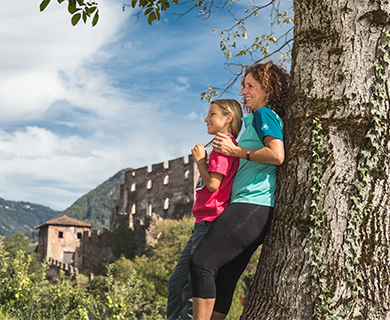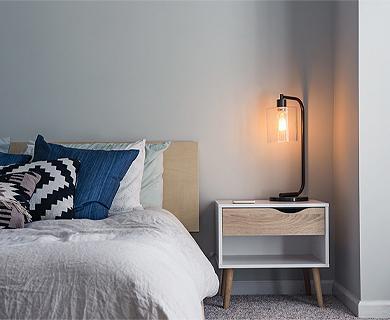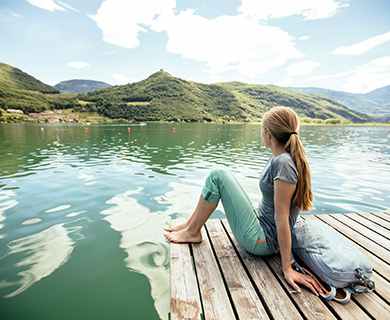Tourist attractions in Bolzano, Italy
Bolzano is a clear reflection of a place where different cultures meet and intercultural exchange takes place. In art, for example, paintings by Giotto and works by the Gothic school coexist, while in architecture, the unusual contrast between the historic town and the modern one, divided by the Talvera river, is quite obvious.
Visiting the city is discovering the peculiarities of the fusion between Mediterranean and central Europe. Discover the city's artistic and cultural treasures: churches, monuments, historical streets and squares, museums and castles.
Below you can find the opening hours of all tourist attractions in Bolzano. The art-historical itinerary and the Cityguide are available at the Information Office.
- City Guide 2024/25
- Historic and cultural route
- Multimedia guide TOUR LIS: TOUR LIS is a multimedia tourist-cultural guide of the city of Bolzano in Italian sign language (LIS) for deaf tourists. The video guide can also be consulted from a computer at home, but has been designed and developed to be used directly at the place of visit by portable devices (such as smart-phones, i-phones and tablets).
Museums in Bolzano
In the space of just a decade, a number of museums have sprung up in the city of Bolzano to preserve, organise and promote an inestimable cultural heritage that had remained in the shadows for centuries. In addition to Ötzi, the Man from Similaun, the city's museums also focus on nature, local customs, religious cults and modern and contemporary art.
Numerous museums in Bolzano cooperate to organise joint events. One of the most important is the "Long Night of the Museums", which is usually held in November.
Opening hours of the museums at Christmas and New YearSouth Tyrol Museum of Archaeology
Since 1998 home of Ötzi the Iceman, the famous natural mummy. Besides the 5300 year old body, his original clothes and equipment, the museum displays numerous topics providing new insights in life at copper age, research findings, the criminal case and curiosities surrounding the man.
For Info please call: +39 0471 320100.
https://www.iceman.it/en/
Municipal Museum
Since 24 November 2011 the Municipal Museum in Bolzano has been displaying part of its collections in six rooms situated on the first floor and on the top floor turret. This temporary display, with viewing restrictions, is intended as a first step towards returning to the museum in its entirety to the city. Approximately 200 art works from the VIII to the XX century are displayed.
Via Cassa di Risparmio, 14 Tel. +39 0471 997960
CURRENTLY CLOSED FOR WORKS
Museum for Natural History
The palace, which houses the South Tyrol Museum of Natural History today, was formerly the administrative office building of Emperor Maximillian I. The variety of natural landscapes in South Tyrol, and in particular the origins of the Dolomites, are exhibited in an area of 100mq. The marine aquarium is the main attraction and the suggested itineraries are also particularly interesting.
For info please call +39 0471 412964.
www.museonatura.it
Museion - Museum for modern and contemporary art
The building, designed by Architect's studio KSV Krüger Schuberth Vandreike of Berlin, is intended as a centre of contemporary culture and aims to take centre stage in the museum landscape in Italy. The museum exhibits young artists and pushes the boundaries of international mainstream art. At the same time Museion represents a point of reference for local art and endeavours to represent different art forms such as architecture, movies, performance or theatre.
For info please call +39 0471 223411
https://www.museion.it/?lang=en
Mercantile Museum
The museum is housed in the Mercantile Palace, already a centre of the prestigious Mercantile Magistrate, established in 1635. The museum chronicles the economic history of the city of Bolzano. The exhibits are in chronological order and show meeting rooms, the chancellor's room, and Hall of Honour with original furnishings, archive documents, objects of art and paintings.
The Mercantile Museum and the exhibition ‘Citrus fruits in Bolzano’ will be closed on 15, 16 and 17 August 2024.
Information: Tel. +39 0471 945702
https://www.handelskammer.bz.it/en/services/mercantile-museum
School Museum
The Collection of the School Museum are presented in a new guise and in a new location, a Renaissance palace also known as the former Agnello and formerly the 'old Rencio school' in Bolzano.
At the School Museum of the City of Bolzano it is possible to get to know, through the many aspects of school life, the particular characteristics of an era: visitors can reconstruct the historical experience of the three cultures that inhabited this land (Italian, German, Ladin) with the help of didactic materials, photographs, report cards, documents, furniture and posters.
For info: tel. +39 0471 997581/588
via Rencio - Rentscherstr. 51/b
www.comune.bolzano.it/museodellascuola
museo.scuola@comune.bolzano.it
Treasure of the Dome Museum
The museum houses a splendid collection of sacred artworks from the Baroque epoch in South Tyrol. As well as the precious liturgical robes and flags painted by famous artists, the museum stands out for its collection of stunning XVIII century goldsmith work.
For info please call +39 0471 978676
MMM Messner Mountain Museum Firmian
Firmian castle is clearly the centre stage of the extraordinary Mountain Museum project by mountaineer Reinhold Messner. The museum collection is exhibited in the turrets, rooms, and courtyards and offers the visitor a complete vision of the mountaineering world and the special relationship between man and mountain. Exhibits range from pictures, relics and natural objects that tell about this relationship, the link with religion, the greatness of the most famous peaks, and the history of mountaineering until modern day Alpine tourism. Each year the journey is enriched with a temporary exhibition.
For info please call +39 0471 631264
http://www.messner-mountain-museum.it/en/
Permanent exposition within the Monument to Victory
BZ '18-'45. One monument, one city, two dictatorships. The exhibition, opened in July 2014, illustrates the history of the Monument to Victory, retracing the local historical events between the two world wars. Admission to the monument is free, as well as guided tours for school groups and groups of at least 10 people (by reservation - T. + 39 0471 095474).
Info:
Department of Culture - City of Bolzano
Via Portici/Laubengasse 30
I-39100 Bolzano/Bozen
Tel. +39 0471 997581 / 997588
monumento@comune.bolzano.it
www.comune.bolzano.it/cultura
Permanent exposition within the "Semirurali House"
Since May 2015, the "Semirurali House" in via Bari/Baristr. 11 has opened to the public with an exhibition dedicated to the history and the memory of the Don Bosco district.
Semirurali House
Via Bari/baristr. 11 Bolzano/Bozen
Info: T. + 39 0471 997581 / 997582
www.comune.bolzano.it/cultura
servizi.museali@comune.bolzano.it
Antonio Dalle Nogare Foundation
Antonio Dalle Nogare Foundation was established to promote contemporary art as a language for interpreting changes in society, as a tool for promoting interaction between art, architecture, innovation and artistic research and as a means for encouraging a wide range of the general public to take part.
Visits to the Foundation are possible on the following days and times:
Friday from 5.00 to 7.00 pm (guided tour at 6 pm)
Saturday from 10.00 am to 6.00 pm (guided tour at 11 am)
From Tuesday to Thursday by appointment, by writing to visit@fondazioneantoniodallenogare.com
Via Rafensteiner Weg 19
I-39100 Bolzano Bozen
Tel. +39 0471 971626
fondazioneantoniodallenogare.com/en/
info@fondazioneantoniodallenogare.com
Cinè Museum
The Museum informs about movie- and television tecnology of the local cinema’s history. It presents projection machines of the past, video cameras, editing machines, flatbed editors, projectors, films etc. as well as historic documents, posters and documentary films. It proposes also film festivals, conferences and didactic activities, castings.
Runkelstein Castle, the illustrated manor
At the beginning of the Sarntal Valley you'll find Runkelstein Castle, on the northern outskirts of town. You can easily get there on foot walking the lush green Talfer promenade or using a bike by taking the bike path. Built in 1237 on a jutting edge of rock, the castle has been worked on and enlarged many times over and it boasts a collection of beautiful frescoes, depicting life scenes from court, hunting parties, knightly tournaments and scenes from everyday life. Literary depictions are not missing, as they also illustrate the adventures of Tristan and Isolda and those of King Arthur and his Knights of the Round Table. It is the biggest collection of profane frescoes and the best preserved one of the Middle Age. A restaurant offers the chance to taste local dishes in a medieval setting.
Info:
Via S.Antonio - St. Anton Weg 15
39100 Bolzano/Bozen
T. 0471 329808
Museum Eccel Kreuzer
Josef Kreuzer, late judge, businessman and art collector of Bozen/Bolzano, donated in January 2017 in his testament his building in the historical city center with a collection of more than 1.500 artworks of about 300 artists of South Tyrol, Tyrol and the Trentino to the Autonomous Province of Bozen/Bolzano. On the ground floor of the building is situated the Art Space Eccel Kreuzer, a place for temporary exhibitions.
Info:
Via Argentieri / Silbergasse 10
39100 Bolzano/Bozen
T. 0471 131621
Currently closed for works
The central Churches in Bolzano
Among the treasures of Bolzano are the many churches and monasteries, which are scattered along the main streets and in the most hidden corners.
The history of Bolzano is also told through the cloisters, arcades and frescoes of the various architectural styles that have contributed to the development and beauty of the city, to the extent that they still fascinate tourists and Bolzano residents today.
Maria Assunta Cathedral
The church dedicated to Maria Assunta is the co-cathedral of the Bolzano - Bressanone diocese and the most important Gothic church in the region. It stands on the site of an early Christian, early medieval and Romanesque basilica consecrated in 1180, later modified by Lombard workers and completed by Swabian workers at the end of the 14th century. The 65-metre-high bell tower is the work of the Swabian architect Hans Lutz von Schussenried (1519).
Outside, on the north side, there is a crucifix of the Veronese school with a votive image of the pilgrim Ulrich being struck by a bell and the “Porticina del Vino”, also known as “Porta della Sposa”, where wine was sold according to an ancient privilege.
On the west side, the Romanesque portal with prothyrum and lions, the rose window restored after the bombings of World War II, the bronze door by Defner and the fresco attributed to Friedrich Pacher of the Madonna and Child (1475).
In the interior, three naves of the same height, the Gothic pulpit carved from sandstone by Hans Lutz von Schussenried, the Baroque polychrome marble altar (1720) by Ranghieri and Allio from Verona, the Crucifix (1420), the Baroque chapel of the Graces added in 1745 with frescoes by Karl Henrici (1771), on the altar the venerated statue of Maria Lactans of the Veronese school from 1200. Archduke Rainier of Austria, who died in Bolzano in 1853, is buried in the crypt under the main wing.
On the southern parvis of the building is the monument to Peter Mayr, commander of the Schützen, who supported the rebellion against French rule and was shot on 20 February 1810. It was designed by Georg von Hauberrisser of Munich.
Maria Assunta Cathedral: open Monday to Saturday from 7.30 a.m. to 6 p.m.; Sunday 8 a.m. to 8 p.m.
Bolzano Cathedral Treasury: open Tuesday to Saturday from 10 a.m. to 12.30 p.m. all year round
Tel. +39 0471 978676; info@dompfarre.bz.it
Dominican Church
The Dominican friars settled in Bolzano in 1272 and built a single-nave church within a monastery complex.
Part of the old building is now the Music Conservatory, home to the prestigious Ferruccio Busoni international piano competition, the Municipal Gallery, exhibitions and other important cultural institutions.
In the 17th and 18th centuries the church was decorated with Gothic vaults and elements. The interior houses an altarpiece by Guercino and fine examples of 14th-century Bolzano painting.
The artistic jewel is the Chapel of St. John, which contains a cycle of frescoes of the Giotto school and is a splendid example of 14th-century art. The decoration was commissioned by the Florentine head of the de' Rossi family, naturalised von Botsch. Particularly significant are the scenes from the life of St Nicholas, the Triumph of Death, the Flight into Egypt and the Torture of St Bartholomew.
Opening hours: Monday - Saturday 9.30 a.m. - 5 p.m.; Sunday 12 - 6 p.m.
In the adjoining cloister (entrance from Dominican Square), you can admire frescoes by Friedrich Pacher dating from 1496. The wall paintings narrate the stages of Christ's life. From the cloister it is possible to enter the Chapel of St. Catherine, where Giotto's 15th century frescoes are preserved.
Special opening hours of the cloister: every Saturday from April to October 10 am - 12 pm and 3-5 pm
Franciscan Church and Convent
Franciscans settled in the town in 1221; the present building dates back to the first half of 1300, but the original ceiling, flat and with a polygonal choir, has been replaced by fifteenth-century's vaults.
The cloister is a perfect Gothic example replacing the Romanesque style one of the first construction. There are many frescoes of different ages with examples of the Giotto school of 1600 and 1700. The church has a magnificent wooden altar by Hans Klocker of Bressanone dedicated to the Nativity (painted wood – 1500).
The church choir is embellished by modern stained glass windows by Widmoser.
Monday to Saturday from 10 a.m. to 5.30 p.m., Sunday from 2.30 p.m. to 5.30 p.m.
reinald.romaner@franziskaner.at
Capuchin Church
The church is dedicated to S. Anthony of Padua and was built around 1600 within the Castel Wendelstein estates of the Counts of Tyrol. It has a magnificent altar piece by Felice Brusasorci (1600), above the main altar, and examples of mannerism in the chapels of Maria Assunta and SS. Sebastiano and Giovanni in the first side chapel.
Monday to Sunday from 7 a.m. to 6 p.m.
S. George's Church
Via Weggenstein and S. George's Church: building of Gothic shapes dating back to the beginning of the XV century hosting the Teutonic order. The elegant building is worth a visit for its collection of stems, mortuary shields, gravestones and flags of the members of the order that can be dated to between the XVI and the XIX century.
Opening hours: Monday - Saturday 8 a.m. - 6 p.m., Sunday 10 a.m. - 6 p.m.
St. John's Church
Consecrated in 1180, this small church is the jewel of the town. The simple architecture of the main body is embellished by the church bell with mullioned windows with three and two lights dating back to the first half of 1300. The interior pictorial decoration is exceptional: travelling artists of the Giotto School introduced a new plastic style and an excellent fresco technique revealing extraordinary artistic and interpretative skills.
Saturday from 10 a.m. to 12.30 p.m.
San Martino in Campiglio
Thanks to the collaboration between the parish of the Cathedral and the Italian Touring Club, the tourist office of Bolzano opens on an exceptional basis this small church in late Romanesque style consecrated in 1180. The interior is covered by precious frescoes of the Bolzanina school of the 15th century.
During the special opening hours, the red zone is suspended in Innsbruck street on the side of the little church: three or four parking spaces just before the entrance.
The little church can also be reached by public transport: bus line number 183 (from the Bolzano bus station) to the Mila stop in the district of Campiglio. Lack of pavement between the stop and the church.
The church can be visited on Saturdays from 10 am to 12 pm and 2-4 p.m., from the beginning of April to the end of October.
Chiesa Abbaziale di Gries
The oldest part of the monastery dates back to the thirteenth century and was commissioned by the counts Morit Greifenstein. At the beginning the monastery was inhabited by the Augustinian monks. It was destroyed during the Napoleonic Wars and secularized in 1807 by the Bavarian regime. In 1845 the Austrian emperor donated the monastery to the Benedictine monks from Muri in Switzerland. The church is dedicated to St Augustine and preserves valuable frescoes of Martin Knoller.
In the opening hours (Mon-Sun 9am - 7 pm) the access is allowed as far as the inner gate.
Old Parish Church of Gries
Near to Gries square stands the Old Gothic Parish Church, located in an ancient cemetery, that houses two treasures of great value: a wooden altar with casket created by the famous Michael Pacher (1471-75) considered a masterpiece of Gothic art and counted as one of the best preserved wooden altars with casket in the area and a Romanesque crucifix of 1200 probably of foreign origin.
The church can be visited from Mon-Fri from 10 a.m. to 12 p.m. and 2.30 - 4 pm from the beginning of May to the end of October.; from half June to the end of August Mon-Fri 10am-12 pm
info@pfarreigries.com - no dogs allowed
Download here the info brochure
Church of St Magdalena in Prazöll
The hill on the eastern edge of the Bolzano valley, with a very favourable climate, had been settled a long time ago, as demonstrated by the finding of prehistorical pieces. But the place and the wine of St Magdalena move into the light of history only with a document written 1170 – 1174, in which “Otacher von Berg” gives some vineyards situated in “Placedell” (today Prazöll) to the Chapter of the cathedral of Bressanone. It’s not known when the winemakers built up a church in honour of their patroness; it was expressly named for the first time in 1295 and, according to the masonry, it should not be arisen much earlier. The artistic value of the church of St Magdalena is given by the fine paintings that line all the inside; they were made in two rounds, in different epochs.
The church can be visited on Fridays and Saturdays from 10 am to 12 pm and 4-6 pm from the beginning of April to the end of October
Church of San Vigilio and Church of the Calvary
The little church of San Vigilio houses Gothic frescoes depicting the “history of Maria” and “the history of San Vigilio”. The Church of the Calvary dates back to 1600, it’s in the late baroque style and it has been designed by the architects Pietro and Andrea Delai; it houses valuable frescoes and stuccoes.
The church can be visited on Wednesdays from 3 p.m. to 4 p.m.
Castles in Bolzano
South Tyrol has numerous castles and fortresses throughout its territory. There are as many as 400 castles, some intact some ruined, most of which can be visited and many of which are hidden in the most secluded and least accessible corners of the province. Bolzano has many castles as well, which not only represent an embellishment, but the soul of the city itself.
Roncolo Castle, an illustrated manor house
Situated at the beginning of the Val Sarentino, to the north of the city, the castle is easily accessible on foot via the greenbelt footpath along the Talvera River, or by bicycle along the cycle path. The bus n.12 from Walther Square approach the base of the castel. Free car-parking facilities are available for cars and bicycles at the entrance of the castle.
Built in 1237 on a rock, the castle has been extended and restored several times and houses splendid frescoes depicting scenes of courtesan life, hunting scenes, chivalric competitions and episodes of everyday life. There are also literary cues, such as the representation of the story of Tristan and Iseult and the adventures of King Arthur and the Knights of the Round Table. It is by far the greatest and best kept collection of profane frescoes of the Middle Ages.
Cultural events and exhibitions featured regularly in the castle hall and rooms are also very interesting. The castle has a restaurant service offering the opportunity to enjoy local delicatessen in a medieval ambience.
www.runkelstein.info/home-english
Mareccio Castle, ancient walls in the vineyard
The XIII century castle, situated right behind the hystoric city centre, is surrounded by fields of the fine Lagrein grapevines and has stunning views of the Rosengarten. It was renovated in the 1980s and transformed into a conference and exhibition centre.
It is certainly the most interesting and exclusive complex, ideal for housing conferences, seminars, banquets, concerts, cultural events and exhibitions. The beautiful interiors, with stunning frescoes, have all the modern features and conference facilities. The view of the castle from the river walk nearby is particularly impressive. Adjacent parking.
https://www.maretsch.info/kopie-von-maretsch-home
Flavon Castle
Flavon Castle is open to the public as a restaurant and venue for parties and receptions. It can be accessed from the Aslago quarter: the road winds up the rocky point where the castle stands (parking). Great views can be admired over the Adige Plain, the town of Bolzano and the north (Salto Plateau, Val Sarentino, and Renon). It houses precious frescoes of the 1500.
https://www.haselburg.it/?l=en
MMM - Messner Mountain Museum Firmian
Located at the southern-western outskirts of Bolzano/Bozen, this castle is considered one of the emblems of South Tyrol. The original name "Formigar" stems from the Latin word "formicaria". During the second half of the 15th century Duke Sigismond , Count of Tirol, bought it and transformed it into the biggest and most prestigious of his castles naming it Sigmundskron (Sigismonds' crown). At the present date it has become the Mountain Museum of Reinhold Messner MMM Firmian.
Info:
Via Castel Firmiano / Sigmundskronerstr., 53
39100 Bolzano/Bozen
T. 0471 631264
Historic streets and squares in Bolzano
Arcades
Once the heart of the medieval village, they have kept this characteristic to date with their seamless continuity of shops, some typical and traditional, others chic and modern. The façades are a joyful sequence of different architectural traits: erker (murals), stucco decorations, pastel colours, the balcony of palazzo Mercantile, arcades alternating in various heights and decorations. The Old Townhall arcades, now centre of the Archivio Storico Comunale, are particularly beautiful with their pointed arches and fresco decorations. The back streets linking parallel roads are also of interest as they show the architectural sequence of buildings and the various uses of living spaces (shops, stores, cellars, halls, laboratories are some examples).
Via Joseph Streiter
Via Joseph Streiter was named after the poet, jurist and mayor of Bolzano in the second half of the XIX century. It corresponds to the north moat of the medieval village and the buildings on the south side correspond to the buildings of the north side of the arcades. The first part of the street is very attractive, especially in the summer: an open-air bar, shops, restaurants and decorations next to the fish stalls create a unique atmosphere. Many arches running through the street give it a medieval character. Number 25 was the entry to the old Townhall.
Via Bottai
Via Bottai is one of the most characteristic streets of the town centre with its beautiful ironwork signs, inns and the historical hotel Luna Mondschein. The Natural Science Museum (see museum route) is situated at the end of the street in what used to be the administrative office of Massimiliano I, Emperor and Count of Tyrol (built in 1512). The old inns "Cavallino Bianco" and "Ca' de Bezzi", a favourite destination for many artists, are right next to the Museum.
Via Argentieri
Walther Square
The Piazza Walther, also known as the "drawing room" of the town, was completed in 1808 by order of King Massimiliano di Baviera, and initially named after him. It was later given the name of the Archduke Giovanni d'Austria (Johannesplatz) and, in 1901, it was dedicated to Walther von der Vogelweide (1170-1230), one of the great German poets and storytellers of the Middle Ages. After the annexation of South Tyrol to Italy, the square was named after King Vittorio Emanuele III and, only in the second part of the post-war period, the name of the German poet was resumed. A monument to Walther, of neo-Romanesque style, sculpted in white Lasa marble by the Venostan sculptor Heinrich Natter (1889), dominates the centre of the square. In 1935 the fascist authorities had it transferred to a more secluded part of town (Rosegger Park - via Marconi). The monument was later relocated in the square in 1985.
Via e piazza della Mostra
Galleria Sernesi and Europa
Galleria Sernesi and Europa, fine shopping arcades link the Libera Università di Bolzano and via Museo which takes you to the Archaeological Museum and the Civic Museum.
Vicolo della Pesa
Various alleys and through roads link via Portici with the backstreets and parallel roads, Dr. Streiter and Argentieri. Take one of these, vicolo della Pesa, and you can reach piazza del Grano, where the farmers' market was once held.
It is one of the oldest places in Bolzano, once hosting the castle of the Prince-Bishops of Trento (destroyed in 1277 by Mainardo II di Tyrolo) and the church of Sant'Andrea (destroyed in 1785). One of the most picturesque buildings of the city is situated to the north of this square: la casa della Pesa (1634), public weigh-house until 1780.
Casa della Pesa
A beautiful building dating from 1634, on whose side part of the old masonry can be seen, it was the site of the public weighbridge until 1780. Today, after restoration work, it houses several of the city's cultural associations, the Euregio headquarters and the Waag Café. Opposite, a plaque commemorates the church of St. Andrea (demolished in 1785) and in front of it you can admire the picturesque Piazza del Grano, embellished with beautiful shops and restaurants, once the site of the market for wheat and other agricultural products. This is the first urban centre of Bolzano with the castle of the Prince Bishops of Trento, who founded the city. The castle was probably demolished by Mainard II of Tyrol during one of his raids to gain control of the important trading town (1277).
Piazza delle Erbe
The colourful and lively piazza delle Erbe, heart of the city centre, hosts the famous fruit and vegetable market daily (except on Saturday afternoon, Sunday and public holidays).
The Neptune fountain, with a statue with his trident and bronze shells, by G. Mayr di Fiè (1745), is on the corner with via Portici. It has been classified amongst the one hundred most beautiful fountains in Italy and is also called "Gabelwirt" (Innkeeper with fork).
On the corner with Via Museo a plaque on the façade of the neo-Gothic building, commemorates the old "Al Sole" hotel where eminent personalities such as Goethe, Herder and Emperor Giuseppe II, resided between 1783 and 1790.
Piazza Municipio
Piazza Municipio is enclosed by the charming town hall palaces to the south (in neo-baroque style with interesting frescoes in the sala del Consiglio – 1907) and by Casa Amonn to the east (façade decorated with rococo style stuccoes and fresco decorations on the remaining buildings), represents the beginning of the Arcades and is often centre for exhibitions.
Piazza Stazione
The train line Verona - Bolzano was completed around the middle of the XIX century; the train station dates back to 1928 and was built by Angelo Mazzoni with numerous allegorical sculptures (electricity, steam, rivers) by Franz Ehrenhöfer. The fountain of frogs, situated opposite, was rebuilt after the original in 1930 following the bombings of the Second World War.
Bolzano’s District
Bolzano is made up of numerous districts that are very different from each other and which, precisely because of this, blend together and compensate perfectly. From the old town centre to the rationalist part, from the Venetian style of San Quirino to the "popular" quarters where the "Semirurali" houses are still visible, from the industrial area, hub of companies and young start-ups, to the new Firmian-Casanova quarters surrounded by vineyards and apple orchards.
Gries
A village within a city. This is what you feel when you wander through the streets of the Gries district, as if you were in an Alpine village, but with Mediterranean characteristics. It is not uncommon to find palm trees, agaves and prickly pears.
Annexed to Bolzano in 1925, Gries has been the health resort and holiday resort of many famous personalities of the Austro-Hungarian period, hosted by elegant hotels and villas surrounded by parks, gardens and vineyards.
Gries can be reached by crossing the Talvera bridge from where the Victory Monument is visible, built at the behest of the fascist regime from 1926 to 1928 to a design by Marcello Piacentini. Since 2014 it has housed the exhibition "BZ '18-'45 - A monument, a city, two dictatorships", which traces local, national and international events and the history of the city in this particular historical moment. The Saturday market is held in the square of the same name, and the arcades of Corso Libertà begin, which, crossing Piazza Mazzini and reaching Piazza Gries, are home to a number of excellent shops and bars for tasty aperitifs.
Piazza Gries is home to the Benedictine Abbey of Muri Gries and the Church of St Augustine, where in 1845 the Benedictines of the Swiss Muri took over the pre-existing Augustinian monastery. The church is an impeccable example of Baroque style, embellished inside with frescoes by Martin Knoller. The keep of the former fortress, now a bell tower, houses the largest bell in South Tyrol.
Near the Piazza is the old Gothic Gries parish church, which houses treasures of great value: a wooden casket altar made in 1475 by Michael Pacher, a Romanesque crucifix from 1200 and an old cemetery.
Near the valley station of the San Genesio cable car is a jewel of modern architecture, the Antonio dalle Nogare Foundation Museum of Contemporary Art, which houses a selection of works from Dalle Nogare's private collection and is animated by temporary exhibitions, workshops, performances and much more. Continuing along Via Sarentina, we arrive at Roncolo Castle, the illustrated manor house.
Rencio & St. Maddalena
An area with a very high wine vocation, the beautiful district is embellished on all slopes by neat rows of vines.
Slava grapes are mainly grown here, mostly vinified in Santa Maddalena (named after the hill), with its famous ruby red colour. Farmsteads dot the hillside and the tidy Rencio district. Worth a visit are the curate's church dedicated to St. Laurence (first witnessed in 1180, later remodelled, round apse and bell tower from 1712), the School Museum and the small church of St. Magdalena, situated in a panoramic position on the top of the hill, which houses a valuable cycle of frescoes from the 14th century, well preserved on all the interior walls. Open from April to October every Friday and Saturday from 4pm to 6pm.
Europa-Novacella and Don Bosco
Travelling south along the Isarco promenade, you come across the part of the city flanked by the naturally beach-like river banks, pristine green areas and the Semirurali Park, in the Don Bosco district. Here, you’ll find the medieval archaeological Maria in der Au excavations and the amphitheatre, which plays host to the Bolzano Festival Bozen. A stone’s throw away, at 11 via Bari, is the last Semirurali house surviving from the working-class neighbourhood built in the 1930s. Today, it’s a museum that tells the story of this area. Connoisseurs of architecture should venture to the Casanova residential district. Surrounded by vineyards and Castle Firmian, it’s home to some 3,500 residents and is an internationally acclaimed example of ecological architecture.
Oltrisarco-Aslago
If you follow the promenades and cycle paths on the left bank of the River Isarco, you arrive at district known for Haselburg castle benignly looking out over the neighbourhood. It can be reached via an uphill ramble through the forest, where a green oasis and a panoramic restaurant within its medieval walls await you.
Memory Places
Manlio Longon and Giannantonio Manci
Manlio Longon (1911-1944), administrative director of the Società Anonima Italiana per il Magnesio e Leghe di Magnesio (Italian Magnesium and Magnesium Alloy Company) located in the industrial area of Bolzano, was the head of the National Liberation Committee (CLN) of the city, the clandestine committee whose aim was to organise the struggle for liberation from Nazism in Alto Adige. He was arrested at his workplace on 15 December 1944 and, after two weeks of detention and interrogation, was killed. A street and a primary school are dedicated to Manlio Longon in Bolzano.
Giannantonio Manci (1901-1944) was the head of the Trentino CLN. He was captured on 28 June 1944 in the Lower Sarca Valley in an operation managed by the Gestapo in Bolzano which put an end to the Trentino resistance. During an interrogation it seems that he threw himself out of a window on the third floor (the headquarters of the Police and Security Service) so as not to betray his comrades. Manci and Longon were decorated with a gold medal for military valour in memory.
Lager
The Nazi transit camp in Bolzano was located in today's Resia Str. (number 80) on the edge of the Semirurali working-class district. It was in operation from the summer of 1944 until May 3, 1945 and during the few months of its operation thousands of civilians were registered there. The reasons for the arrests were mainly political; there were also numerous family hostages and racial deportees (Jews and nomad). The deportees, from the entire Zone of Operations in the Pre-Alps and from the regions of central and northern Italy, were identified by a serial number and a triangle of a different colour according to category. The exact number of deportees in the Bolzano camp is not known; paper and witness sources indicate 11,000 registrations. Today, the only remaining original structure of the Bolzano camp is the boundary wall, which was declared of historical interest in 2003. The area on which the camp stood, surrounded by the wall, is privately owned land on which, since the 1960s, the wooden and masonry barracks of the camp no longer stand but a complex of high-rise buildings. Today the Passage of Remembrance houses an open-air museum that tells the story of the camp. Behind the glass panes of a new installation, the names of the 11,000 deportees who passed through the camps appear in rotation.
Virgolo Gallery. Forced labour
Work was compulsory for the deportees of the Bolzano Lager. The Virgolo Tunnel is one of the many workplaces where they were exploited. This gallery was chosen as a symbolic place because hundreds of deportees worked there from the winter of 1944 to the spring of 1945. In the autumn of 1944 the machinery of the Industria Meccanica Italiana (IMI), which manufactured ball bearings for use in the war, was transferred from Ferrara to the Virgolo Tunnel. Here is a symbolic reminder of the forced labour, which was also carried out in the numerous dependent camps scattered throughout the province by women and men deported from the Bolzano Lager.
Platform in Pacinotti Str.
A fundamental function of the Bolzano Lager was to transport thousands of Italian civilians to the Nazi Lager on the other side of the Alps. A network of transit Lager had been set up for this purpose, and Bolzano was one of the Lager installed at Fossoli di Carpi (Modena), Borgo San Dalmazzo (Cuneo) and Trieste, which was also an elimination camp. From the testimonies collected we learn that many of the 13 transports to the Nazi Lager on the other side of the Alps left from the track in Pacinotti Str., loaded with men and women deported to the Bolzano Lager. The first transport left on 5 August 1944, the last on 22 March 1945. The destination camps of the 13 transports were: Mauthausen (5 transports), Flossenbürg (3), Dachau (2), Ravensbrück (2), Auschwitz complex (1).
The memory of the Lager. Church of St Pius X
Near the church of S. Pio X, between Resia Str. and Piacenza Str., there are three "decontextualised" monuments dedicated to the memory of the Bolzano Lager. The first of them is on the side of the church along Piacenza Str. It is a shrine dedicated to Madonna Queen of Martyrs; it dates back to 1955 and was placed there thanks to the commitment of don Daniele Longhi, who was arrested in December 1944 as a member of the CLN and deported to the Lager in Bolzano. On the lawn in front of the Church, along Resia Str., there is an inscribed stone and a statue. The porphyry memorial stone was designed by Guido Pelizzari in 1965 and placed in the flowerbed that still stands in front of the residential complex in Resia Str. (number 80). Under the inscription there was a brief plan of the Lager and a small concrete rhombus with the dates "1945-1965". In 1985 this same memorial stone was reworked, chiselling out the plan of the Lager and filling in the space with the dedication of the City of Bolzano on the 40th. Anniversary of the Liberation. The concrete rhombus was removed and the date "1943-1945" was engraved on the top of the memorial stone. On the same occasion it was decided to transfer the memorial stone in front of the St Pius X Church. The nearby statue was conceived as a complement to the memorial stone and was placed here in 1985. It consists of a male and a female figure shouting to the sky the pain of their tragic condition while holding hands. It is the work of local sculptor Claudio Trevi.
Plaque dedicated to Josef Mayr Nusser
In 2010 the municipality affixed a plaque bearing a courageous phrase by Josef Mayr Nusser to the street dedicated to him at the back of the building. Josef Mayr Nusser (Bolzano, 27 December 1910 - Erlangen, 24 February 1945) became a leader of Catholic Action in 1934 in the German part of the diocese of Trento, which included Bolzano at the time. He clandestinely joined the German-speaking anti-fascist and anti-Nazi movement "Andreas Hofer Bund" (Andreas Hofer League), founded in 1939, during the period of the options and made up of the so-called "Dableiber", i.e. South Tyroleans whose mother tongue was German and Ladin, who had decided to remain in South Tyrol and resist forced Italianisation, rather than emigrate to the territories of the Third Reich as the majority would have wished. Drafted into the SS in 1944 in a barracks in Konitz in West Prussia (now Poland), Josef Mayr Nusser refused to swear allegiance to Hitler at the end of his military training. He was therefore tried, found guilty of treason and sentenced to deportation to Dachau Lager, where he did not make it. He died of hardship in Erlangen, on the freight car that was transporting him to the Bavarian Lager. His body was moved in 1958 and now rests in the church of S. Giuseppe in Stella di Renon. He was beatified on 18 March 2017.
Thematic trail: https://www.josef-mayr-nusser.it/it/sentiero-tematico/
Victory Monument
In February 1926 the Fascist government decided to erect a monument in honour of Cesare Battisti, Damiano Chiesa and Fabio Filzi, martyrs of Irredentism, on the site where in 1917 the construction of a monument to the Kaiserjäger (Austrian Imperial Army Corps) had begun, a project abandoned after the First World War. The monument, designed by architect Marcello Piacentini, was inaugurated by King Vittorio Emanuele III in 1928, two years after the foundation stone was laid. Modelled on Roman triumphal arches, it rests on 14 columns in the form of fasces lictors. The relief on the crowning is the work of Arturo Dazzi and depicts the goddess Victory, above the inscription "Hic patriae fines siste signa. Hinc ceteros excoluimus lingua legibus artibus". Inside there is an altar with a statue of the risen Christ by Libero Andreotti; on the sides are marble busts of Battisti, Filzi and Chiesa, made by sculptor Adolfo Wildt. Below the monument is the crypt, frescoed by the Venetian painter Guido Cadorin, which depicts two female images: the Custodian of History and the Custodian of Victory.
Residential complex in Armando Diaz St.
In the immediate vicinity of the Army Headquarters, in Diaz St. (numbers 7-31), one of the first residential quarters of the "City of Drusus" arose in the mid-1920s: the Rione Battisti. The residential complex was designed by architects Clemens Holzmeister and Luis Trenker, the latter also known as an alpinist and film director, and commissioned by the "Cooperativa impiegati statali e comunali". The four-storey building on Armando Diaz St. is reminiscent of Viennese social housing typical of the 1920s. The inner side of the residential lot (clearly visible from Reginaldo Giuliani St.), characterised by a row of two-storey houses with small gardens, is modelled on the so-called garden-cities.



